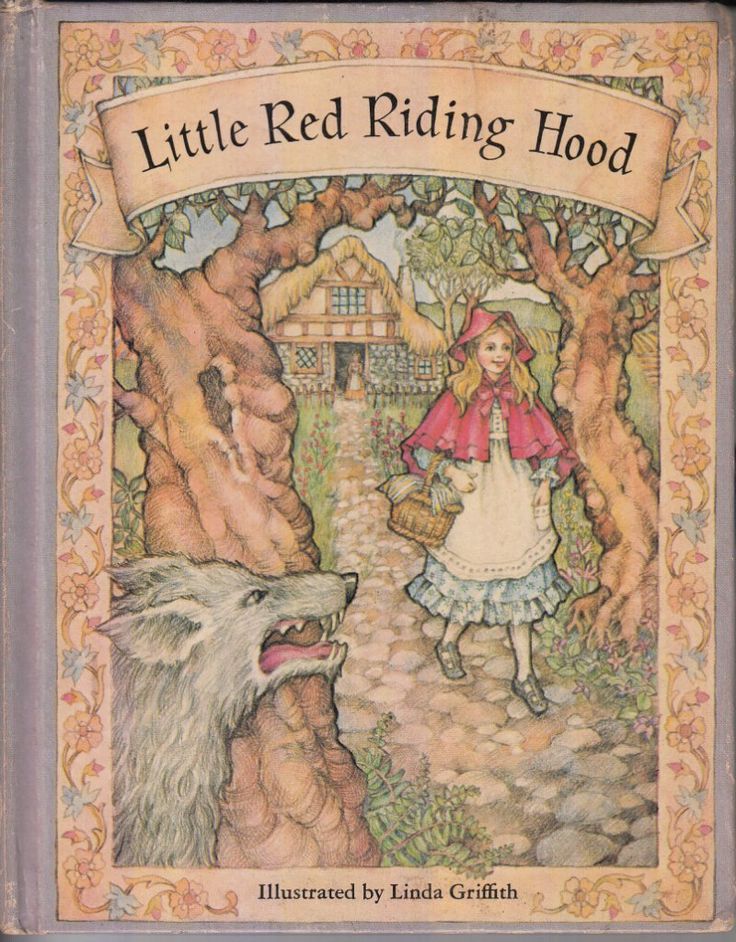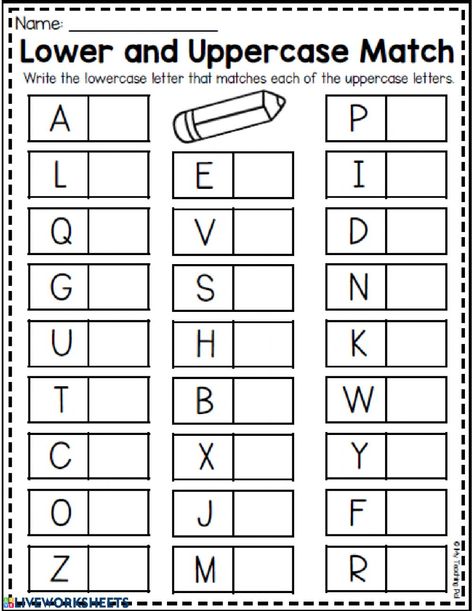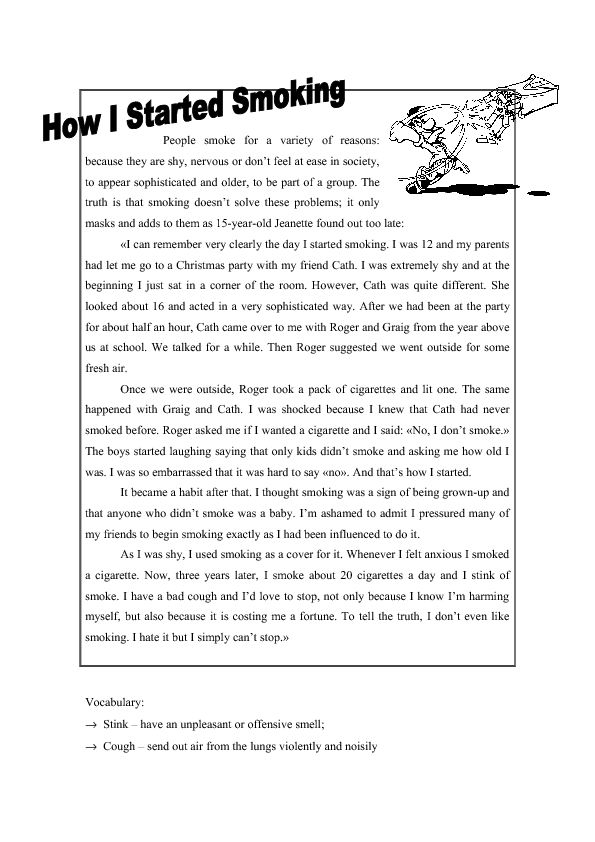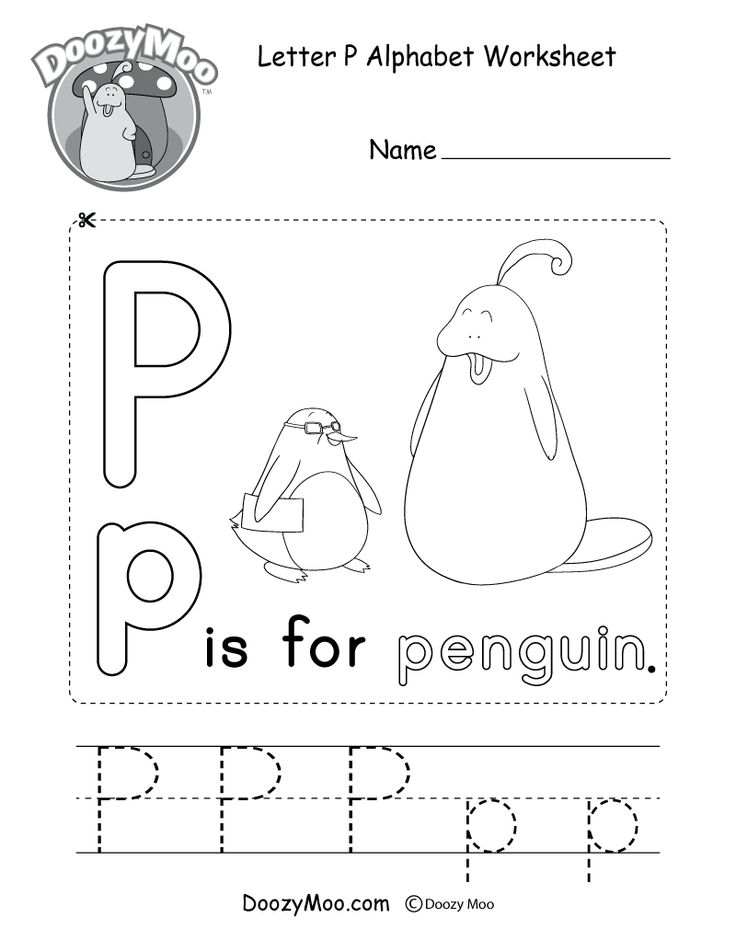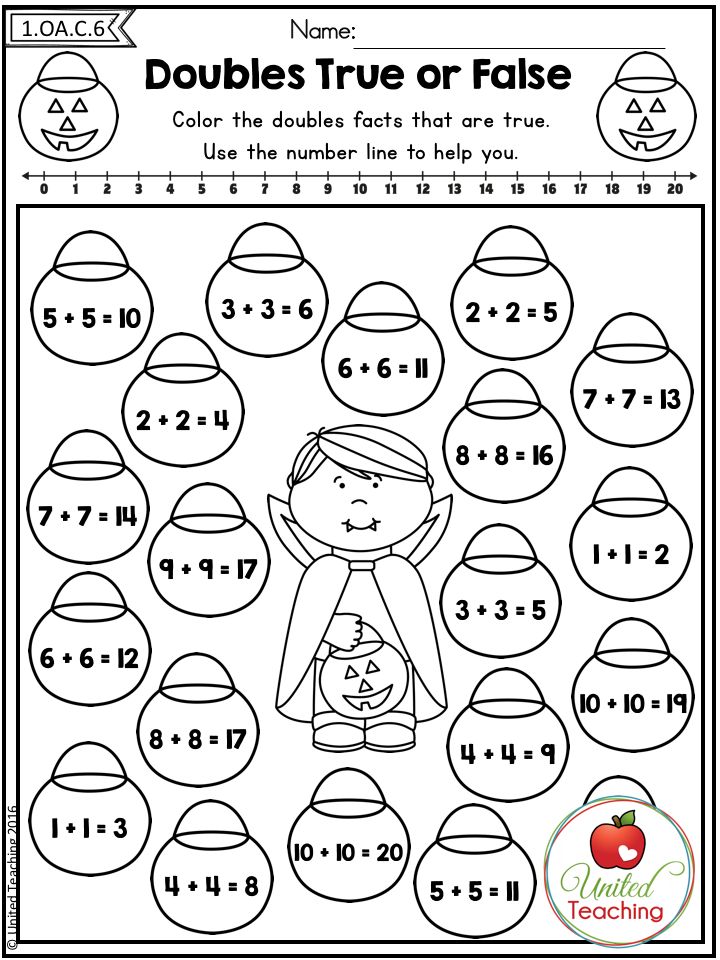Calming strategies for preschoolers
50 Calm-Down Ideas to Try with Kids of All Ages
Navigating childhood challenges can be stressful, and sometimes deep breathing isn’t the solution that works for your child. When your child is in need of tension relief, try one of these techniques:
- Try an inversion. For centuries, Yogis have understood the calming power of bringing the head below the level of the heart, otherwise known as inversion. Whether it’s relaxing in child’s pose, bending over to touch your toes, or practicing a headstand, inverting the body has a restorative effect on the autonomic nervous system, which controls the body’s response to stress.
- Visualize a quiet place. Research has shown that visualization is beneficial for a range of populations to reduce stress levels. Ask your child to close their eyes and picture a calm, peaceful place. Then, gently guide them to slowly start to build up a picture of how it looks, smells, and feels to be there.
- Drink water.
Dehydration has been linked to a reduction in mental performance. Pour your child a tall class of cold water and have them sip it slowly. You can try this with them, and observe the calming effect this has on your own nervous system.
- Sing out loud. Everyone knows the sweet relief associated with rocking out to your favorite tune. But the physical act of singing out loud, even if it is off key, has been shown to release endorphins, the “feel good” chemical in the brain.
- Do the “Downward Facing Dog” pose. Just like inversions help reset the autonomic nervous system, the yoga pose known as Downward Facing Dog in particular has the added benefit of activating several muscles in the arms, legs, and core. This stretch helps muscles begin to burn additional blood glucose that is made available by the body’s fight or flight response.
- Paint it out. Not only does painting give the brain something to focus on other than the stressor, but participating in visual arts has been linked to resilience to stress in general.
 If the thought of dragging out the tempera gives you stress, have your child try “painting” with shaving cream on a plastic shower curtain in the yard. Not only is clean up a breeze, but your child will smell great when they are finished.
If the thought of dragging out the tempera gives you stress, have your child try “painting” with shaving cream on a plastic shower curtain in the yard. Not only is clean up a breeze, but your child will smell great when they are finished. - Jump rope. Set a timer for 2 minutes, put on some music, and challenge your child jump to the beat of the song. If your child isn’t able to jump rope, playing hop scotch is a great alternative.
- Jump high. Challenge your child to a jumping contest to see who can jump highest, longest, fastest, or slowest. This is another great way to get in some exercise to help your child blow off some steam.
- Blow bubbles. Just like blowing on a pinwheel, blowing bubbles can help your child gain control of their breathing and thus, their mental state. Bonus: Running around popping bubbles is just as fun as blowing them.
- Take a hot bath. After a long day at work, there is nothing more relaxing than laying in a bathtub of hot water with the lights turned down and no interruptions.
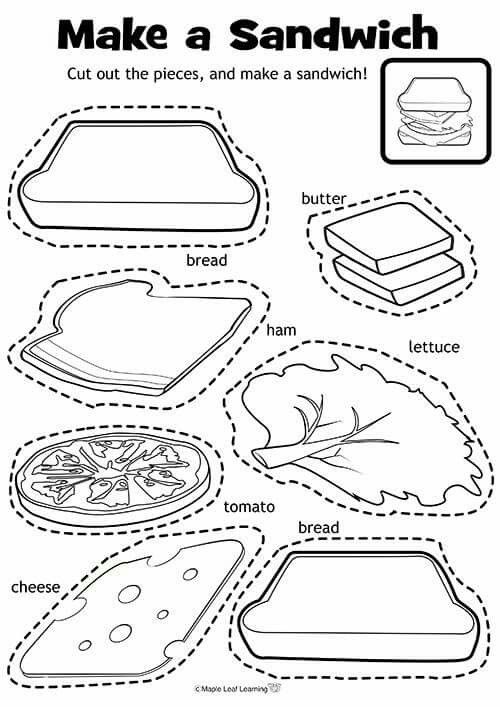 The same holds true for kids. Use bath time as a chance to help your little one unwind from the activities of the day. Introduce a few simple bath toys and allow your child to relax as long as they need to.
The same holds true for kids. Use bath time as a chance to help your little one unwind from the activities of the day. Introduce a few simple bath toys and allow your child to relax as long as they need to. - Take a cold shower. While the complete opposite of a hot bath, cold showers actually have a restorative effect on the body. Not only do cold or even cool showers reduce inflammation in the muscles, it improves heart flow back to the heart, and leads to a boost in mood. One study on winter swimmers found that tension, fatigue, depression, and negative moods all decreased with regular plunges into cold water.
- Have a cozy drink. There is a reason why many people herald September as the beginning of Pumpkin Spice Latte (PSL) season. Drinking a warm drink on a cool day makes your body feel warm, almost like a hug from the inside. Giving your child a warm hot chocolate or warmed milk with a splash of vanilla will elicit the same response you have over that first sip of your PSL.
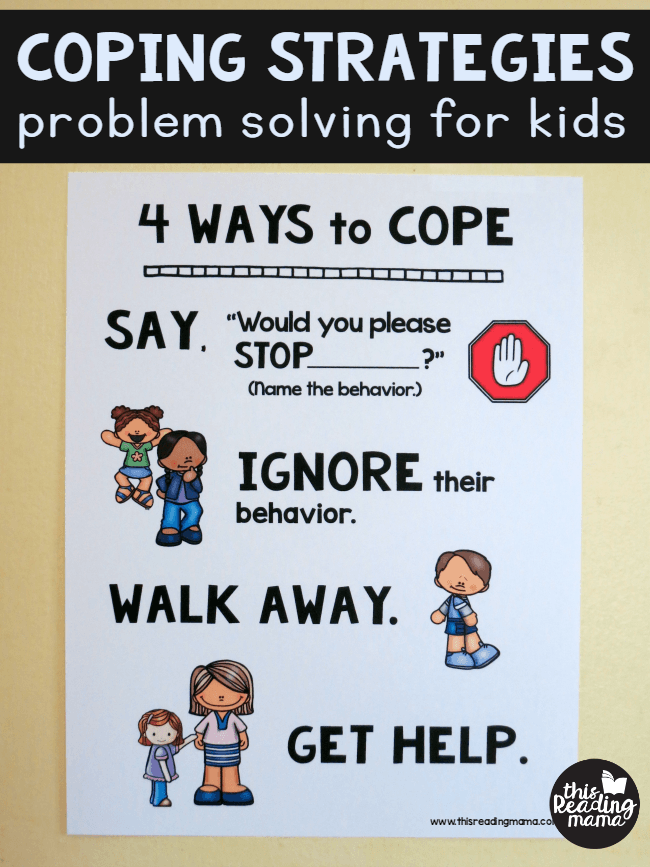
- Blow out a candle. Light a candle for your child to blow out. Then re-light it and move it further and further away from them, so they have to take deeper and deeper breaths to blow it out. This is a great way to practice deep breathing, while making a game out of it.
- Watch fish. Have you ever wondered why there is always a fish tank in hospitals and medical centers? The University of Exeter in the UK did, and found that watching fish swim in an aquarium reduces blood pressure and heart rate. Better yet, the larger the fish tank, the greater the effect. The next time your child needs to calm down, take them to the local lake, hatchery, or aquarium for a little fish-watching therapy.
- Count backwards from 100. Not only does counting give your child a chance to focus on something other than what is bothering them, counting backwards offers an added concentration challenge without overwhelming their brain.
- Repeat a mantra.
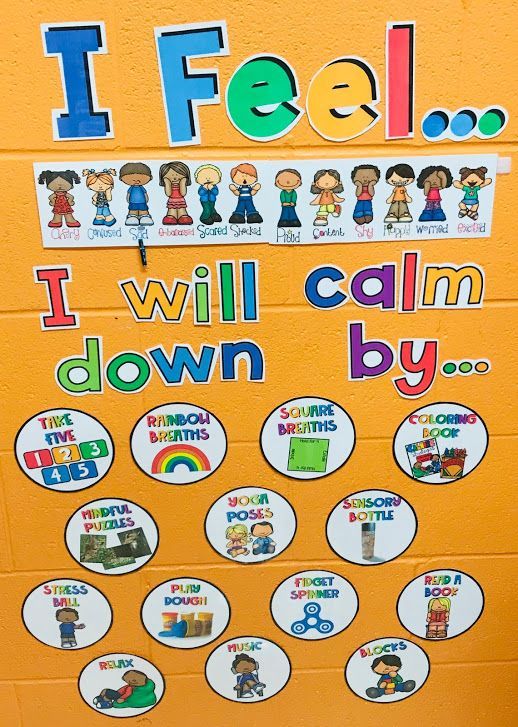 Create a mantra that you and your child can use to help them calm down. “I am calm” or “I am relaxed” work well, but feel free to get creative and make it something personal to you and your child.
Create a mantra that you and your child can use to help them calm down. “I am calm” or “I am relaxed” work well, but feel free to get creative and make it something personal to you and your child. - Breathe into your belly. Most of us breathe incorrectly, especially when we are in a stressful situation. Have your child think about their belly like it is a balloon. Tell them to breathe in deep to fill the balloon, and breathe out to deflate it. Repeat this simple process 5 times and notice the effects.
- Shake a glitter jar. “Calm Down Jars” have been making their way around Pinterest for a while now, but the concept behind them is sound. Giving your child a focal point for 3-5 minutes that is not the stressor will allow their brain and body to reset itself. These jars can be made simply from sealed canning jars filled with colored water and glitter or with baby food jars filled with warm water and glitter glue.
- Go for a run.
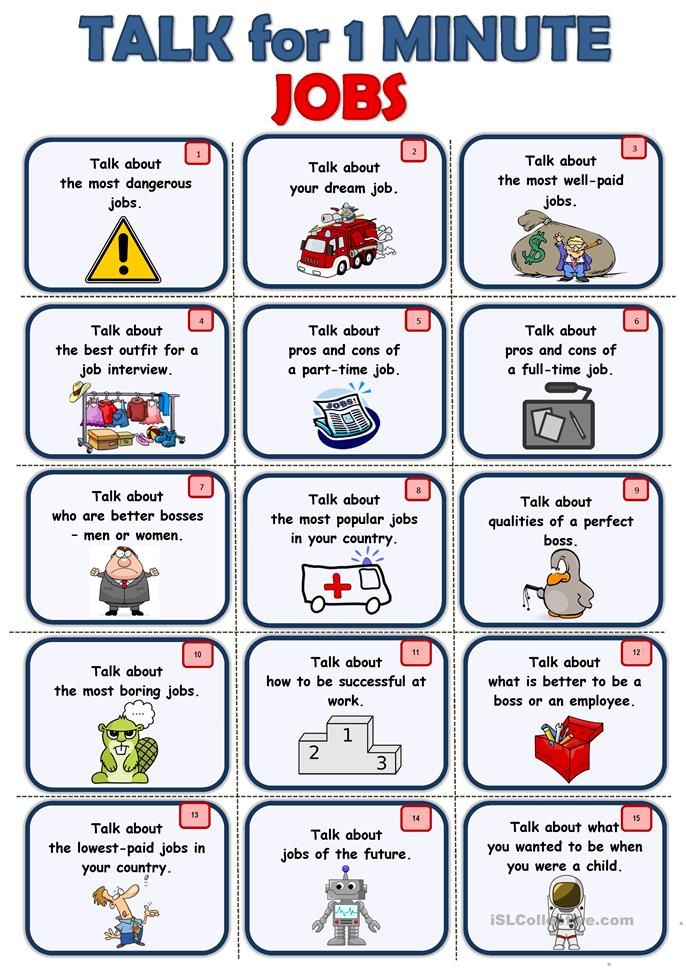 Running has been shown to reduce stress, and can sometimes be more effective than a trip to the therapist’s office. Going for a 10 minute jog can not only affect your child’s mood immediately, its effects on their ability to cope with stress can last for several hours afterward.
Running has been shown to reduce stress, and can sometimes be more effective than a trip to the therapist’s office. Going for a 10 minute jog can not only affect your child’s mood immediately, its effects on their ability to cope with stress can last for several hours afterward. - Count to 5. Just when it seems as though they “can’t take it anymore”, have your child close their eyes and count to five. This form of 5-second meditation offers the brain a chance to reset itself and be able to look at a situation from a different perspective. It also gives your child a chance to think before they act in a volatile situation.
- Talk it out. For children who are able to verbalize their feelings, talking about what is bothering them gives them a chance to let you know what is going on while processing it for themselves. The trick is to resist the urge to “fix” the problem. Your child needs you to listen and ask appropriate questions, not offer unsolicited advice.
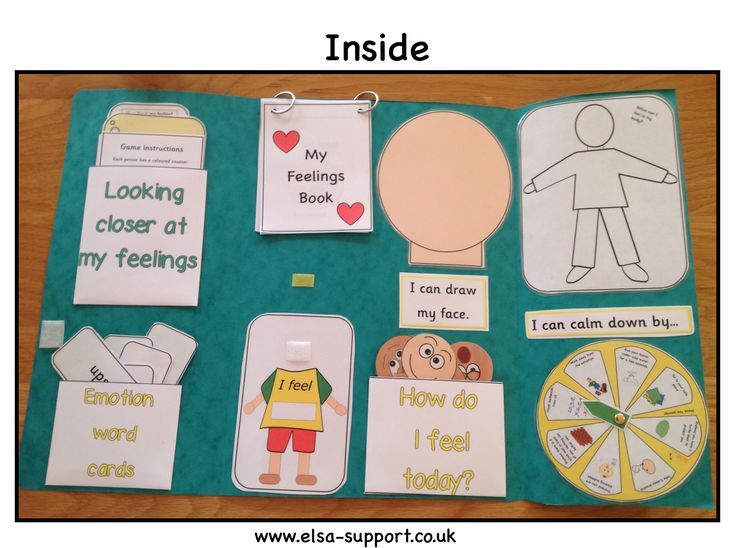
- Write a letter in the voice of your BFF. We would never talk to our best friend in the same critical way we talk to ourselves. The same is true for our children. Tell them to be kind to themselves, and ask them what they would tell a best friend to do in their situation.
- Decorate a wall. We’re not talking about paint and decor, but poster tack and pictures from magazines or printed from the internet can give your child a chance to create large-scale temporary art in any space. The creative process is what is important, not the end result.
- Create a vision board. Have your child cut out words and pictures from magazines that speak to their interests, desires, and dreams. Then have them glue these pictures and words onto a poster board to display in their room. Not only does the process of creation allow them to think about what they want from life, displaying things they love gives them an opportunity to focus on what is really important when they are upset.

- Give or get a bear hug. Hugging allows your body to produce oxytocin, a naturally occurring hormone in your body necessary for immune system function. Not only does a 20 second hug reduce blood pressure, increase feelings of well-being, and reduce the harmful physical effects of stress, both you and your child will reap the benefits!
- Walk in nature. According to Stanford scientists, walking in nature has been proven to improve cognition and reduce stress. Even if you do not have time to spend the 50 minutes researchers did, taking a 15 minute walk in nature works can be just what your child needs.
- Envision your best self. This is a great way to motivate your child to work toward a goal. Have them write down where they would like to see themselves in a week, a month, or a year, with this specific goal in mind.
- Blow on a pinwheel. Similar to the candle exercise, blowing on a pinwheel focuses more on controlled exhalation rather than deep inhalation.
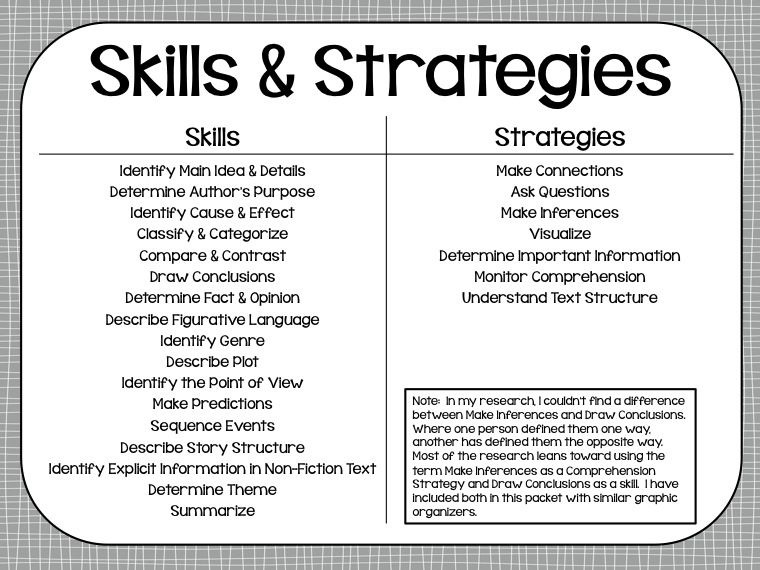 Tell your child to make the pinwheel go slow, then fast, then slow to show them how they can vary the rate at which they blow out the air in their lungs.
Tell your child to make the pinwheel go slow, then fast, then slow to show them how they can vary the rate at which they blow out the air in their lungs. - Squish some putty. When a child plays with putty, the brain’s electrical impulses begin firing away from the areas associated with stress. Try a store bought putty or make your own.
- Take up pottery. Much in the way playing with putty fires electrical impulses in your child’s brain, sculpting with clay or throwing pots can have a similar effect. It also has the added benefit of being considered “active learning”, a powerful condition that allows your child to learn through exploration.
- Write it out. For older children, journaling, or writing their feelings down can have a profound effect on their mood, especially if they can do so without the fear of having it read. Give your child a notebook to keep in a safe place, and allow them to write about how they feel, assuring them you will not read it unless they ask you to.

- Gratitude, gratitude, gratitude. A cousin to “write it out”, gratitude journaling has been linked to better performance in the classroom as well as a reduction of stress outside of learning environments. Having a separate notebook only for things your child is grateful for will give them the freedom to keep their journaling activities separate.
- Name your emotion. Often when children become overwhelmed, it is because they have difficulty identifying the negative thoughts they are having. Whether your child is quick to anger, panic, or obsess to ensure things are perfect, ask them to give this feeling a name, and help them talk back to it. For instance, by asking your child, “is Mr. Perfect bothering you again?” you can work together to help them challenge their perfectionism, rather than fight them over it.
- Rock in a rocking chair. Not only does rocking in a rocking chair provide non-weight bearing strengthening to the knees and core, its repetitive nature offers stress-relief as well.
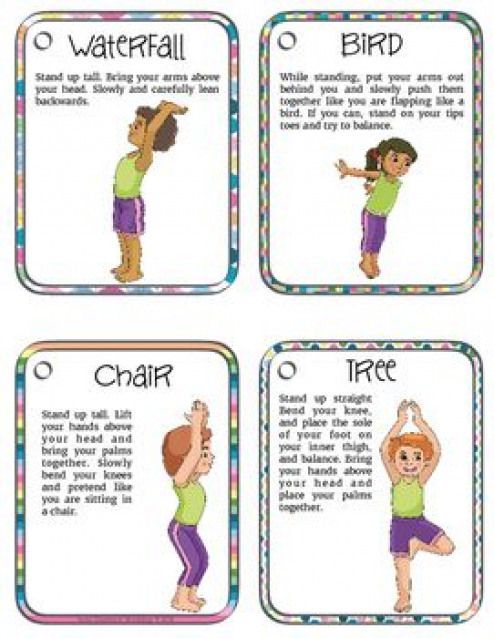 Rock in a rocking chair with your child or allow them to rock by themselves as a way to self-soothe their frenzied emotions.
Rock in a rocking chair with your child or allow them to rock by themselves as a way to self-soothe their frenzied emotions. - Push against a wall. This trick is perfect for allowing the body to get rid of stress hormones without having to go outside or even leave the room. Have your child try to push the wall over for 10 seconds, 3 times. This process allows the muscles to contract in a futile attempt to bring the wall down, then relax, releasing feel-good hormones into the body.
- Crinkle tissue paper. Babies are inherently aware of this trick as one of their favorite things to do is crinkle paper. Not only does crinkling tissue paper provide a satisfying noise, the textural changes in your child’s hand sends sensory feedback to the brain in a pathway away from those associated with stress.
- Pop bubble wrap. Anyone who has received a package in the mail knows the joy of popping row after row of bubble wrap. The same material can be found at most retailers and dollar stores and be cut into manageable pieces for stress-relief anywhere, anytime.
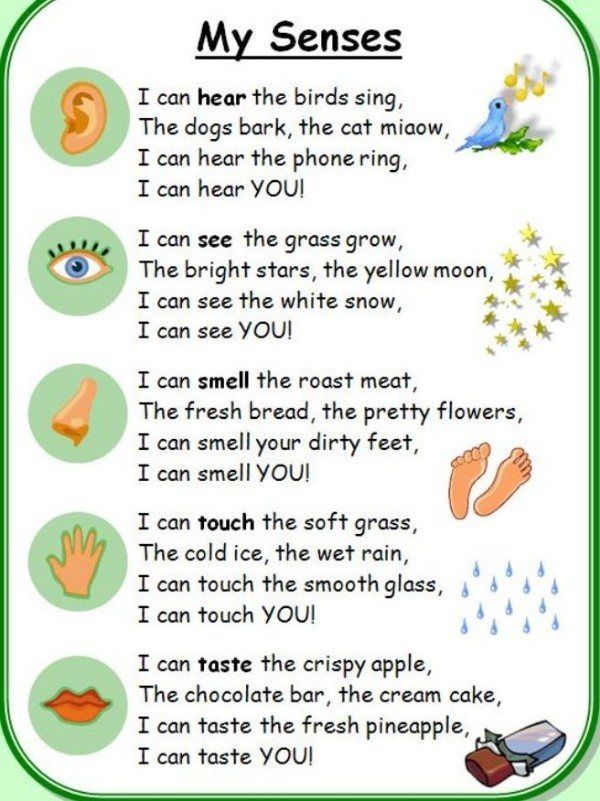
- Roll a tennis ball on your back. An old physical therapy trick, rolling a tennis ball on your child’s back will give them a gentle massage when they are most in need of a calming touch. Focus on the shoulders, neck, and lower back as these are typical places where the body holds tension.
- Roll a golf ball under your feet. Rolling a golf ball under your child’s feet can not only improve circulation, but there are pressure points on the bottom of the feet that relieve stress and relax the muscles of the feet and legs. Roll over the entire sole of your child’s foot using various pressures for maximum benefit.
- Go to your calm down space. Having a designated “Calm Down Space” in your home gives children an opportunity to retreat when they feel out of control and rejoin the group when they need to. It is important to make this space comfortable so your child wants to visit it when they are in need of a self-imposed “time out”.
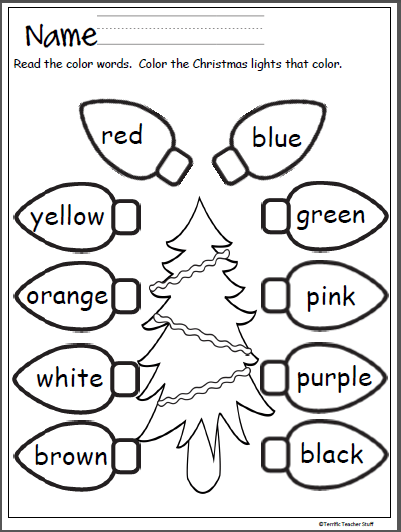
- Play music. Music has a profound effect on mood, sleep, stress, and anxiety. Use a variety of musical styles to set the tone in your home, car, or your child’s room.
- Have a dance party. Adding a physical component to your musical enjoyment gets your kids moving and is a fun way to be active. Crank up the tunes and have a dance party in your living room when your child is in a bad mood and watch their mood transform.
- Do a primal yell. Sometimes all of your child’s emotions are simply too much to contain in their body. Have them stand with their feet shoulder width apart and imagine their feelings boiling up from their toes through their legs and body, and out of their mouths. They don’t have to yell words, or even maintain a certain pitch, just whatever comes out that feels good to them.
- Change the scenery. How many times have we thought to ourselves, “Just walk away,” when confronted by a big emotion? Your child may simply need a change of scenery in order to calm down.
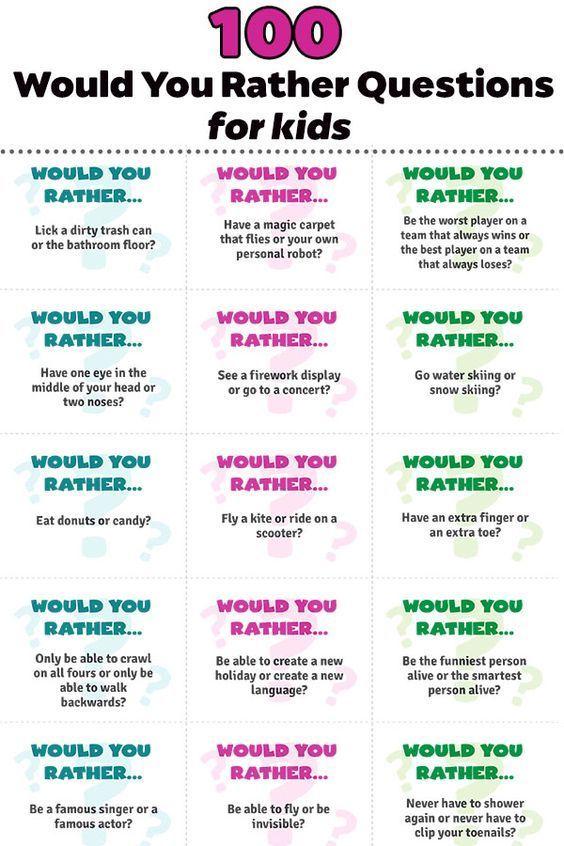 If you are inside, head out. If you are outside, find a quiet space indoors. Either way, change the scenery and you will likely change the mood.
If you are inside, head out. If you are outside, find a quiet space indoors. Either way, change the scenery and you will likely change the mood. - Go for a walk. There’s a real reason people go for walks to clear their heads. Not only is the fresh air and exercise restorative, but the natural rhythm walking creates has a self-soothing quality. Take your child on a walk, and they may even open up to your about what is on their mind.
- Plan a fun activity. When you are in an anxious moment, it can seem as though the walls are closing in and the world will come to an end. Some children need to focus on what is ahead of them in order to reset their internal dialog. Plan something fun to do as a family, and let your child have a say in it. Any topic that will get them focused on a future something to look forward to can be helpful.
- Knead the bread. Grandmothers around the world will tell you that the process of bread making is a tremendous stress relief.
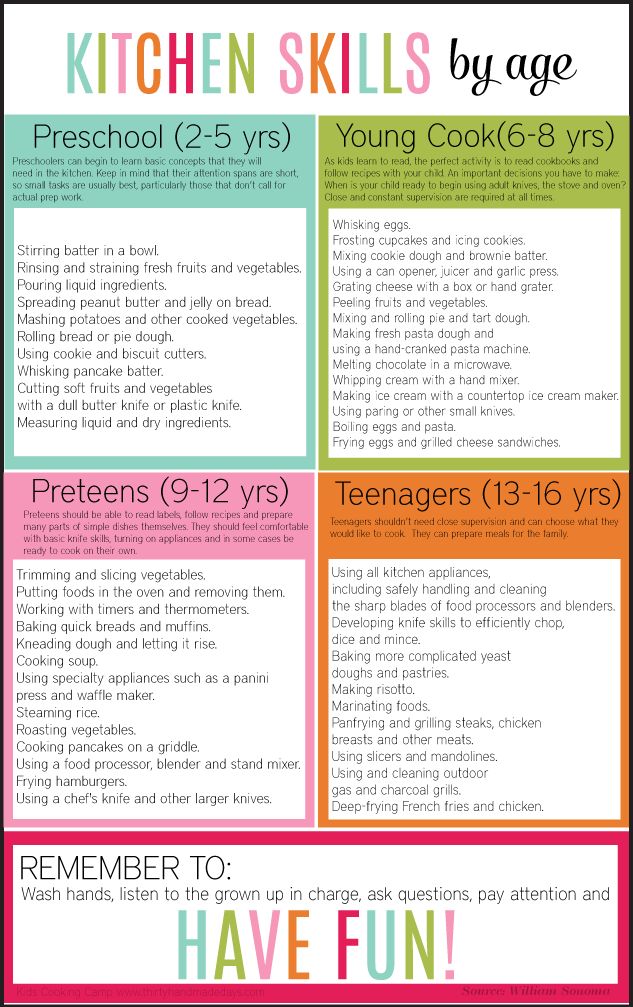 Simple recipes are abundant online that allow your child to get their hands dirty turning and pushing dough. The best part is that at the end, you have homemade bread to show for it!
Simple recipes are abundant online that allow your child to get their hands dirty turning and pushing dough. The best part is that at the end, you have homemade bread to show for it! - Make a bracelet. Crafting in general can facilitate a state of “flow” or a state characterized by complete absorption in an activity. The same concept can be extended to knitting, crochet, folding laundry, or any activity where your child forgets their external surroundings.
- Get on a bike. Bicycling for children has largely become a thing of the past. With the introduction of bicycle lanes and paved trails in urban areas, bicycling is safer than ever and can be a powerful form of self-soothing. Not only is it easy on the joints, it promotes balance, exercise, and can be done with the whole family.
- Take a coloring break. It’s not without good reason that restaurants give children coloring; it gives them something to focus on, and can be a great mindfulness activity that reduces anxiety.
 Make a trip with your child to pick up some crayons and markers, and get them excited about filling in the pages of a coloring book.
Make a trip with your child to pick up some crayons and markers, and get them excited about filling in the pages of a coloring book.
Sign up for our weekly newsletter and never miss another post - plus get valuable FREE resources each week!
Send me resources!
Previous
Social Anxiety: 5 Proven Methods for Boosting Confidence
7 Things Every Parent of an Anxious Teen Should Try
Next
Calming Activities & Soothing Techniques for Preschoolers
Contact us
Eden Prairie Montessori Learning Blogs
Engage Team • Jul 16, 2017
Contact Us Today!
Learning to regulate our emotional responses, especially during times of stress, can be difficult. Most children have some natural ways of self-regulating, but may also need to learn appropriate ways to respond when experiencing anxiety. Calming strategies can help a child to work through strong emotions. It is our job as parents to find ways to not only help them calm down when becoming upset, but to help them learn to calm down anywhere and in any given situation.
It is our job as parents to find ways to not only help them calm down when becoming upset, but to help them learn to calm down anywhere and in any given situation.
When your child is anxious or stressed, these calming activities and soothing techniques are great for helping them settle so they can move past any problem or upset, and can really help little ones relax and regain their sense of control. They are also great as quiet time activities.
Did you know that blowing bubbles can have a calming effect on children?
The exercise of blowing the bubble encourages children to practice deep breathing which has calming effects on the body. So next time your kids are having a bad day, are tired or irritable (they all have them). Instead of fighting a losing battle, get out the bubble mixture, get them blowing bubbles and have some fun. You’ll both feel better, more relaxed and able to face the day.
A Calm Down Jar is a meditation tool to use whenever a child feels stressed, overwhelmed or upset.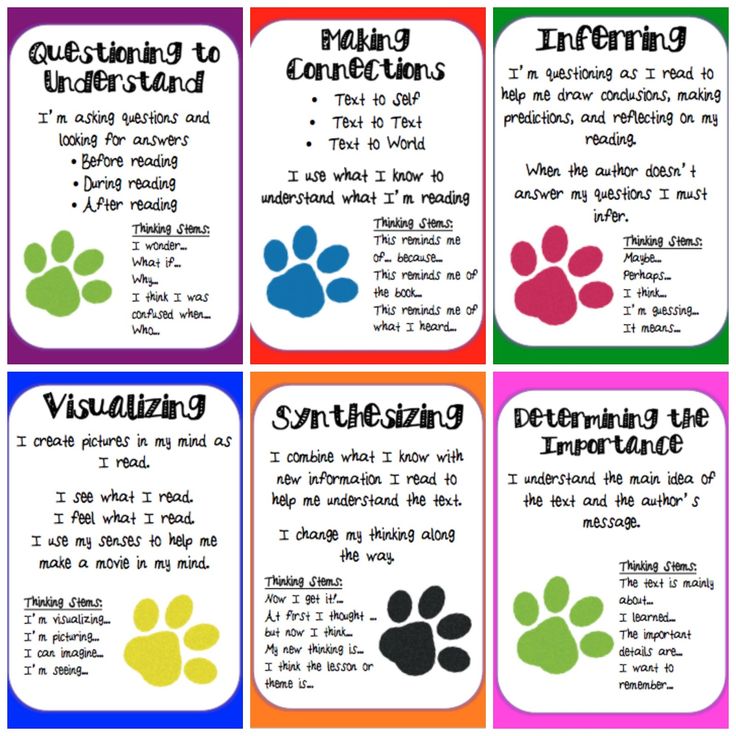 Imagine the glitter as your thoughts. When you shake the jar, imagine your head full of whirling thoughts, then watch them slowly settle while you calm down. Calm Down Jars provide healthy and effective ways for little ones to help soothe themselves, calm down, take deep breaths, and work through their emotions.
Imagine the glitter as your thoughts. When you shake the jar, imagine your head full of whirling thoughts, then watch them slowly settle while you calm down. Calm Down Jars provide healthy and effective ways for little ones to help soothe themselves, calm down, take deep breaths, and work through their emotions.
This can provide a nice alternative to a traditional timeout, and it encourages the child to refocus without punishing them. Although the kids and I just like to shake it up and sit and watch the glitter swirl around and around.
Here are 6 Ways To Make a Calm Down Jar:
http://preschoolinspirations.com/6-ways-to-make-a-calm-down-jar/
DIY Nebula Jar:
http://www.momdot.com/diy-nebula-jar-instructions/
Play dough is one of those magical inventions that engages children for a good chunk of time. Play dough can be taken a step further and become not only an engaging activity for growing little minds, but also a calming one.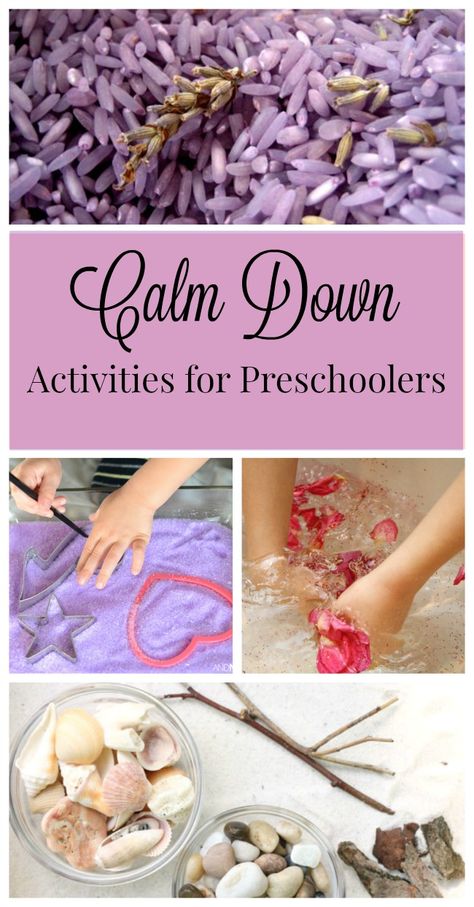 By incorporating the calming aromas of lavender into your child’s play dough, you are providing several of your child’s senses the relaxing calming stimulation it needs to mellow out.
By incorporating the calming aromas of lavender into your child’s play dough, you are providing several of your child’s senses the relaxing calming stimulation it needs to mellow out.
Calming Lavender Play Dough Recipe:
http://www.superhealthykids.com/calming-lavender-play-dough/
Try dimming the lights and reducing the amount of noise in the room.
When people are feeling anxious or tense, they naturally tend to take rapid, shallow breaths. The simple act of breathing slowly and deeply can reduce feelings of stress. Have your child practice this move: Breathe in slowly through the nose…hold for a few seconds…and then slowly exhale through the mouth. Repeat several times.
Have your child form their hands into fists and bring their shoulders to their ears. Count to five with them and then relax. Repeat five times. Try using props such as “squishy stress balls” to help exaggerate the motion.
Children need to feel heard, especially when upset.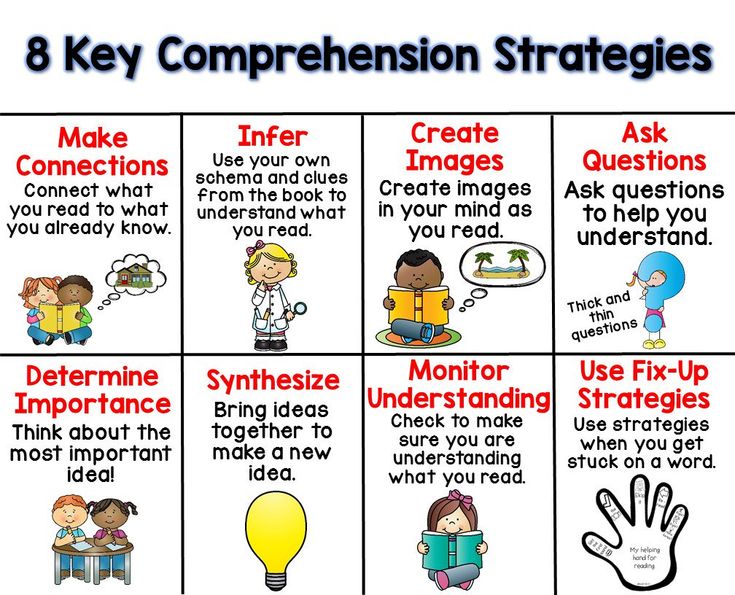 Eye contact dramatically helps them feel that way. Allowing them to talk about how they are feeling will help make leaps and bounds toward calming down.
Eye contact dramatically helps them feel that way. Allowing them to talk about how they are feeling will help make leaps and bounds toward calming down.
Help your child visualize a place they find relaxing. Have them close their eyes and picture somewhere they really likes to go, such as the beach. Ask them what sounds they typically hear there and what the place smells like. Then help them imagine the sounds of the waves crashing, the scent of the salt in the air, or whatever sensory details they described.
When people feel that they’re under pressure, they tense up physically. Squeezing a squeeze ball can help your child release that tension. So can squishing modeling clay or hugging a stuffed animal. These actions also encourage your child to focus on what their hands are doing, distracting them from whatever is causing anxiety.
Calm, quiet music, either sung or using a tape or CD can help soothe a child.
Think about all the stress you deal with throughout the day.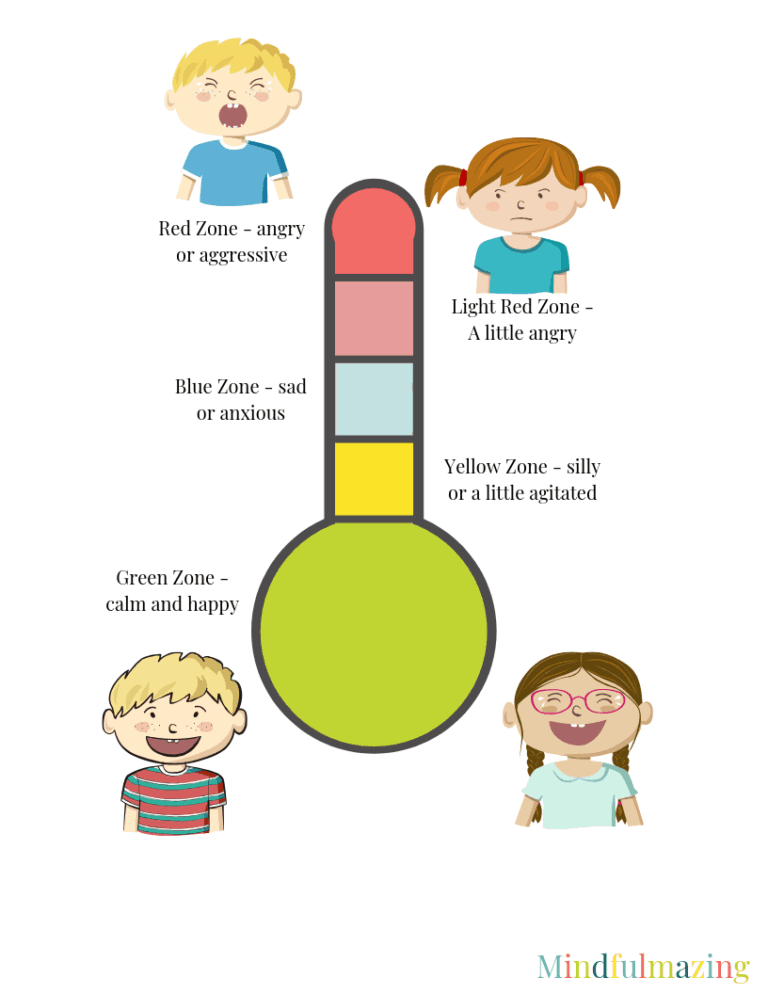 Now think about the demands that are put on your child. Pretty comparable! But as mature adults we know how to (or at least how we should) deal with stress, but our children do not.
Now think about the demands that are put on your child. Pretty comparable! But as mature adults we know how to (or at least how we should) deal with stress, but our children do not.
This is why it is so important for us to give our children the powerful practice of meditation . Mediation is such a powerful stress relieving tool. We can help our children understand its intentions and ability to help us adapt to the changing and stressful world around us, and they will be able to calm themselves when they are in a stressful situation.
Link to Mindfulness/Meditations For Children exercises to get you started:
http://www.emilyfee.com/2017/03/meditation-for-kids.html
https://www.mindbodygreen.com/0-18351/5-kid-friendly-yoga-poses-to-help-your-child-avoid-a-meltdown.html
https://www.mindbodygreen.com/0-24120/5-easy-breathing-techniques-to-calm-your-kid-and-relax-the-whole-family.html
Resources:
Understood
ConnectAbility
Preschool Inspirations
Momdot
Views From a Step Stool
MindBodyGreen
Super Healthy Kids
Emily Fee
At Eden Prairie Montessori Learning Center, we’ve been carefully guiding children for over 20 years.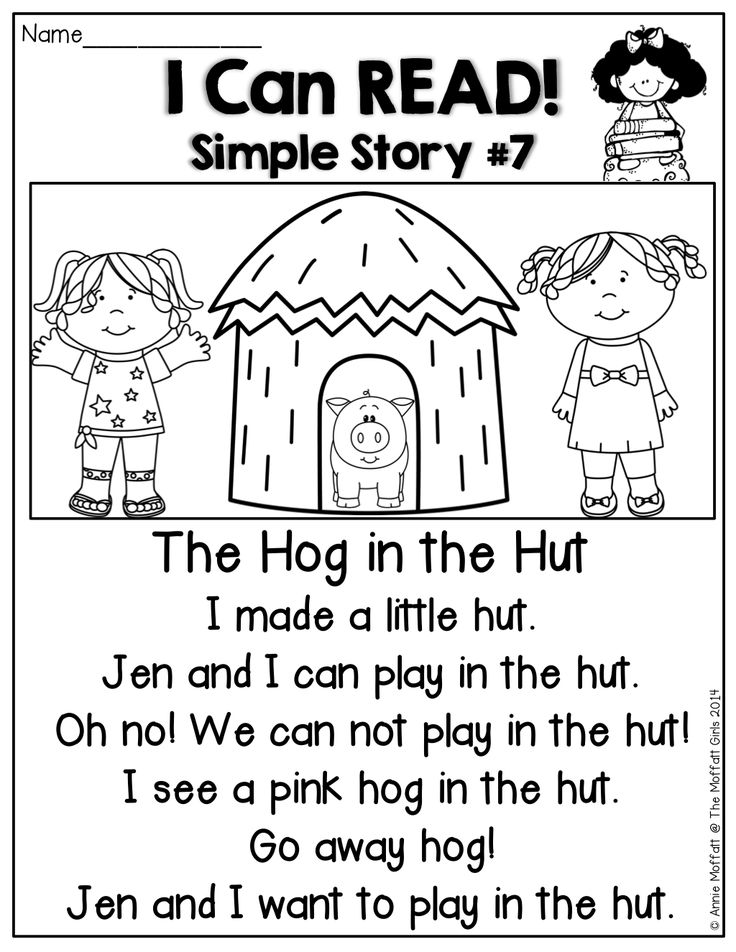 To learn more about our child care center in Eden Prairie and programs, contact us at (952) 944-8466. We look forward to meeting you!
To learn more about our child care center in Eden Prairie and programs, contact us at (952) 944-8466. We look forward to meeting you!
Or for more info about our programs click the button below and we’ll send you an email:
The post Calming Activities & Soothing Techniques for Preschoolers appeared first on Eden Prairie Montessori.
Newer Post > < Older Post
Share
Tweet
Share
Our TOP 15 Montessori Instagram Accounts to Follow!
by Shonali Harrison • 11 Jan, 2023
Here are Eden Prairie Montessori's TOP 15 Instagram accounts you need to follow...
A Magical Montessori Christmas!
by Shonali Harrison • 18 Dec, 2022
Enjoying the magic of Christmas, the Montessori way...
5 WAYS MONTESSORI NURTURES CHARACTER
by Engage Team • 02 Sept, 2022
5 Ways Montessori Nurtures Character...
Show More Posts
Contact us today to get your free informational e-packet or book a tour!
(952) 944-8466
Get In Touch
Leave us a Review
Eden Prairie North Review Eden Prairie South Review
Contact Information:
7455 Market Place Dr
Eden Prairie, MN 55344-3635
Phone: (952) 944-8466
Email: north@epm. education
education
Mon to Fri: 7:00am to 6:00pm
Sat & Sun: Closed
Reach Out to Us to Schedule A Tour!
Schedule a Tour
© 2023
All Rights Reserved | Eden Prairie Montessori Learning
Top Ten Strategies for Supporting Children with Autism at Home
9/15/14
In my experience, there are a few key strategies and practices that are needed in many homes with a child with autism, but unfortunately they are lacking. If you stick to these strategies before you start your home ABA therapy program, your consultant will be very grateful that you made the job easier in advance. Above all, however, these strategies will reduce stress in your own life as well as your child's, and make it easier for them to learn new skills. Even if you don't have the ability to provide ABA therapy, these strategies can change your child's life for the better on their own. I recommend implementing these approaches as early as possible – the younger the child, the better.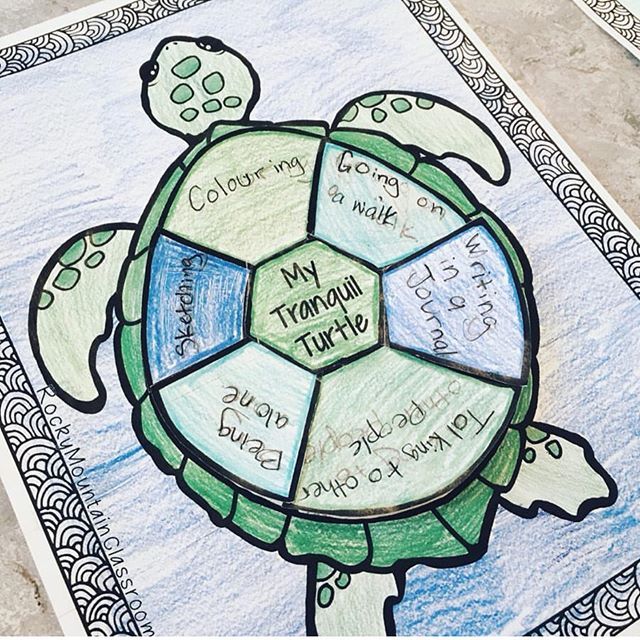 However, if you are caring for an older child or adult with autism, these strategies will be just as helpful. nine0003
However, if you are caring for an older child or adult with autism, these strategies will be just as helpful. nine0003
1. Structure/routine at home: Consistency and knowing what to expect helps children with autism cope with daily challenges. Develop a daily routine for your home and stick to it as strictly as possible. Every day the child should go to bed at the same time. Dinner should be at the same time. Walk outside should be at the same time. Abrupt, unexpected, and significant changes from day to day and from moment to moment are a sure way to undesirable behavior or a full-blown tantrum in your child. A stable daily routine based on what you do every day allows the child to feel more in control of the environment. nine0003
2. Visual schedule for the day: See why you need to start by creating a daily schedule? Visual timetables are vital to teaching a child independence. How can your child learn to do their morning routine, eat breakfast, get ready for school on their own? Very simple: a visual timetable.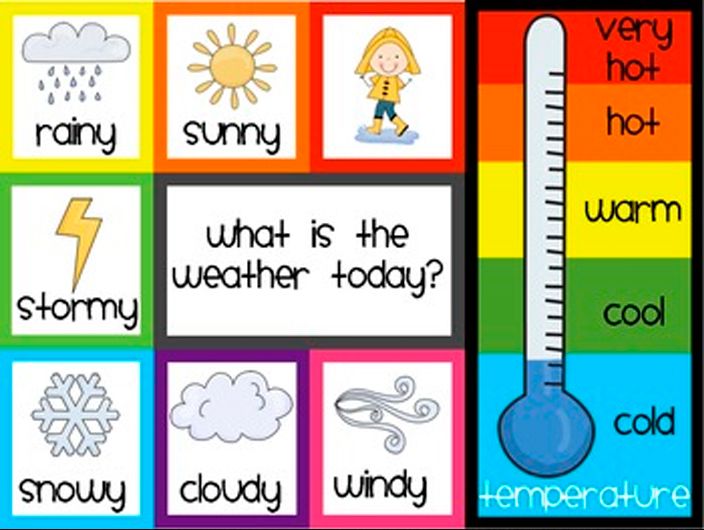 Have you ever caught yourself repeating the same requirement 2, 3 or even 85 times in a row? Make a visual schedule. When your child completes an activity or task, does he just wander around, filling the time with self-stimulation and unwanted behavior? Create a visual schedule. A visual schedule helps these guys understand what they need to do now, what will happen next, and what will happen after that. A word of advice: please don't use written timetables with children who can't read yet. It's useless. Use photos and pictures. (See also: How to Use Visual Support for Autism.) nine0003
Have you ever caught yourself repeating the same requirement 2, 3 or even 85 times in a row? Make a visual schedule. When your child completes an activity or task, does he just wander around, filling the time with self-stimulation and unwanted behavior? Create a visual schedule. A visual schedule helps these guys understand what they need to do now, what will happen next, and what will happen after that. A word of advice: please don't use written timetables with children who can't read yet. It's useless. Use photos and pictures. (See also: How to Use Visual Support for Autism.) nine0003
3. Communication system: I often talk about teaching communication skills, and this is exactly where to start, and as early as possible. Your child may be able to communicate using sign language, tablet, PECS, and so on. Most importantly, everyone in the house should agree to encourage and accept this particular system of communication. If the child can speak, then encourage him to speak and demand them.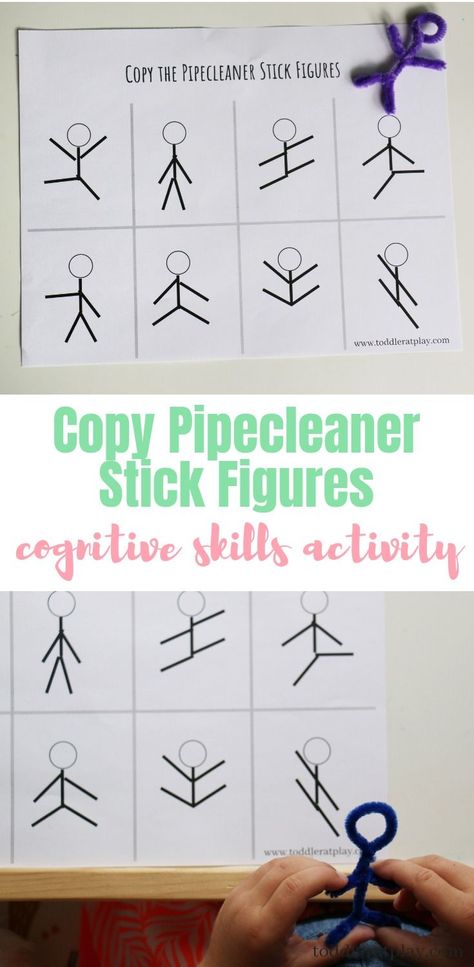 If the child can handle gestures, then encourage and demand gestures from him. Very often I see that at home the child uses many ineffective and weak forms of communication, and this is a problem that needs to be solved. Start encouraging only one system of communication, and make sure everyone in the family understands the need for it. (See also: How to choose a communication method for a non-verbal child with autism.) nine0003
If the child can handle gestures, then encourage and demand gestures from him. Very often I see that at home the child uses many ineffective and weak forms of communication, and this is a problem that needs to be solved. Start encouraging only one system of communication, and make sure everyone in the family understands the need for it. (See also: How to choose a communication method for a non-verbal child with autism.) nine0003
4. Restricted access to rewards: No “free access” or “bitching”. Free access means that if a child simply "adores" the cartoon about Dasha the Pathfinder, then he has the opportunity to watch Dasha for hours every day. Biting means that if a child simply “loves” pretzels, then at any moment he can come into the kitchen, open a cupboard and take a whole handful of pretzels. If your child has free and unlimited access to what he likes best, how will you reward him for good behavior? Positive reinforcement is an effective and critical strategy for teaching your child new skills.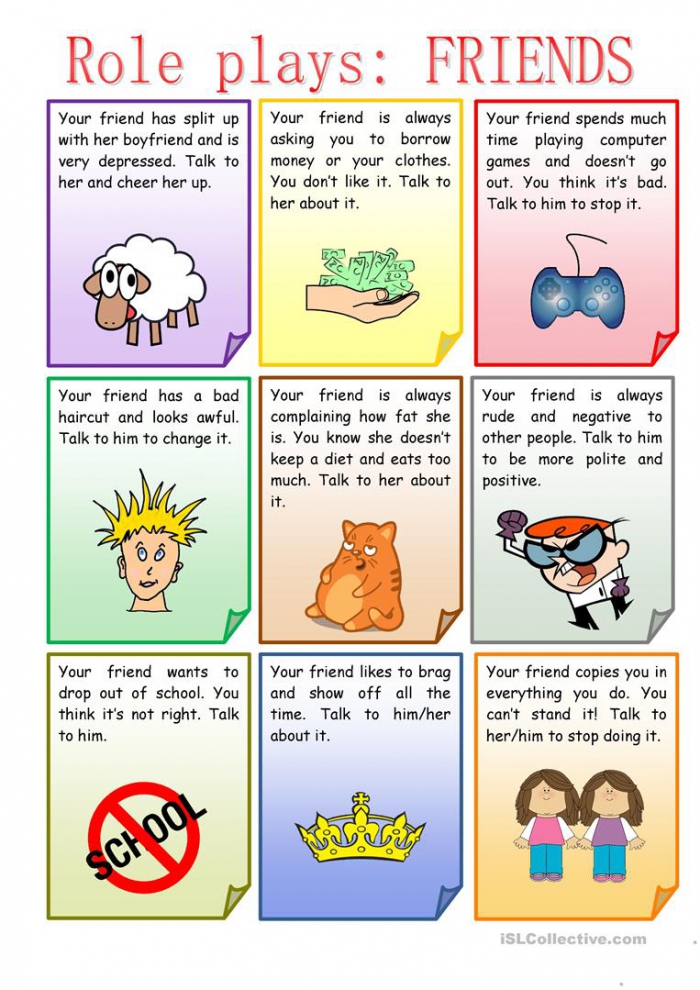 And when I hear from parents: “She just doesn’t have any rewards!”, then very often this means that the child does not need to work for something because she has access to whatever she wants.
And when I hear from parents: “She just doesn’t have any rewards!”, then very often this means that the child does not need to work for something because she has access to whatever she wants.
5. Active escape prevention strategies: The risk of running away is a huge safety hazard for many children with autism, especially non-verbal children. You can start teaching your child not to run away from a very early age. Along with the daily routine (see how important this is?), you should have rules for behavior in the house. The rule about running can be something like, "You should ask your mom before you go out." Make visual cues about the "stop and ask" rule and place them next to each door. When the child approaches the door, he needs to be reminded that he cannot go outside alone. Teach your child to come up to you and use their communication system (PECS, gestures, tablet, etc.) to ask to "walk". I suggest closing visual cues at night to indicate that you can't go outside at all now. Or you can hang another prompt, for example, "Wait." Explain to your child that you can only go outside when the sun is shining. nine0003
Or you can hang another prompt, for example, "Wait." Explain to your child that you can only go outside when the sun is shining. nine0003
6. Choice Board: I always enjoy teaching my kids how to make choices. After all, own choice is a fundamental right of every person, but when it comes to children with disabilities, this right is often ignored. Many problem behaviors can be reduced or eliminated simply by giving the child more choices, such as where to sit, what movie to watch, juice or milk. To help kids make choices, I usually make a visual choice board with cards for their favorite activities, foods, or toys. Throughout the day, I show them the choice board many times and let them choose what to do, what to eat, or what to play with. Depending on the child, the choice board may be updated with varying regularity if the child gets bored with his rewards. I also like using the selection board because it teaches you to look at different items and choose one of them.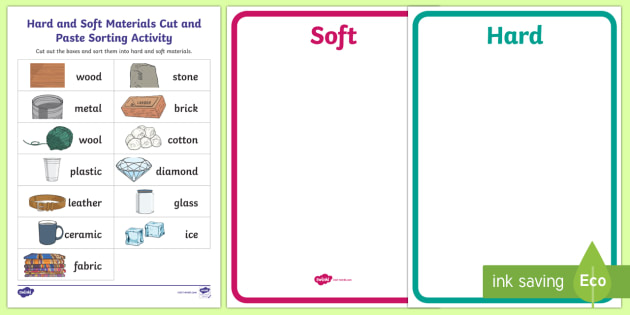 If you have a non-verbal child, instead of running around trying to figure out what he needs while he yells and screams, just hand him the picture board and say "Choose." (See also: Teaching a Child with Autism to Make Choices.) nine0003
If you have a non-verbal child, instead of running around trying to figure out what he needs while he yells and screams, just hand him the picture board and say "Choose." (See also: Teaching a Child with Autism to Make Choices.) nine0003
7. Conditions for toilet training: This is a big strategy that is needed in many homes but is very rare in them. Even if your child is too young for toilet training, you should start this strategy right away. Change diapers only in the bathroom, teach your child to help you with dressing and undressing, let him throw away the soiled diaper, and then wash his hands. You teach everything related to the toilet, in addition to actually sitting on the toilet. The child gets used to the bathroom and learns many skills that he will need later (for example, how to unzip his pants). For complex skills like handwashing, make a step-by-step visual schedule. If the child is dirty, then he should participate in changing clothes, throw away the diaper or soiled underpants, and wash his hands.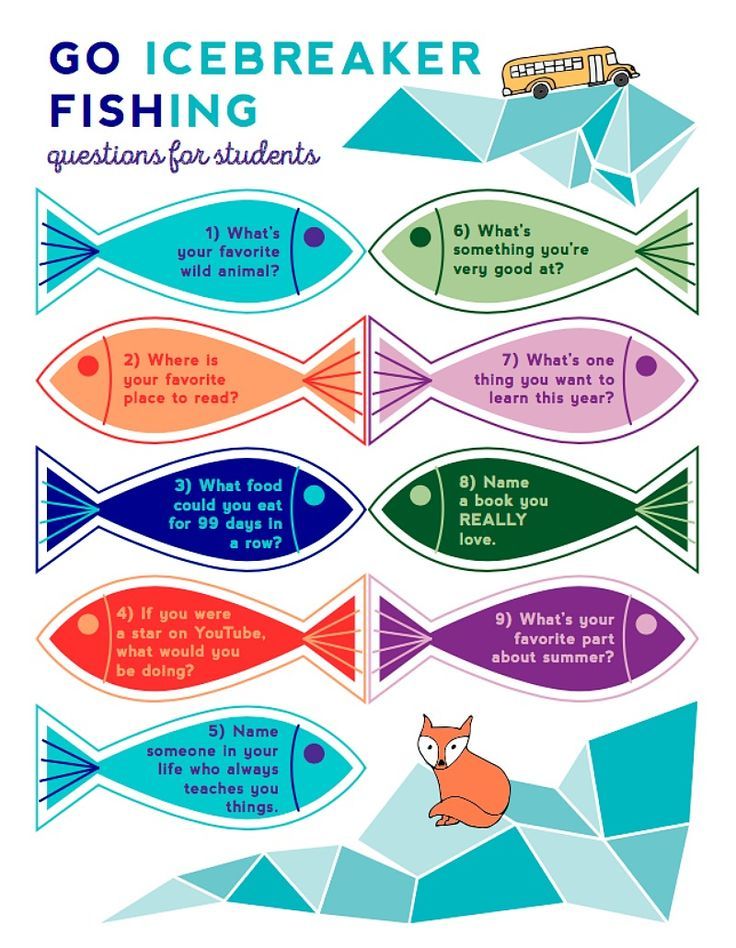 nine0003
nine0003
8. Multimodal sensory stimulation items: This is directly related to the reduction of repetitive, self-stimulating behavior and hyperactivity. If guys spend too much time on stimming, parents often ask me to reduce it. Well, your baby needs stimming for something. So I always recommend redirecting it, not suppressing it. Find objects that your child can manipulate and interact with to get the sensory stimulation they need, so they don't have to wander around the house all day mooing, shaking their arms or spinning around. Options include large gym balls, a trampoline, sensory boxes with a variety of items, glowing toys, finger paints, and so on. nine0003
9. Workspace for self-study: Task completion is one of my favorite programs. I love this program because it teaches leisure skills (my guys almost never have appropriate leisure skills when I meet them) and independence. Do you have to entertain your child all day long? Whether you need to call, do laundry or email, will your child be able to keep busy? If not, then he should be taught independent pursuits.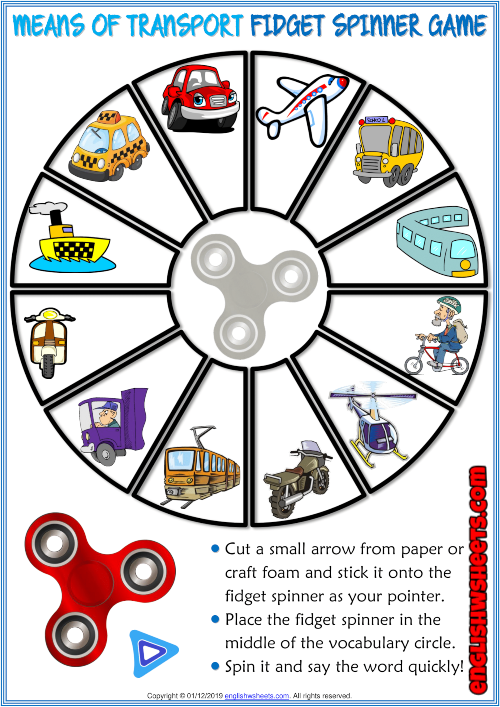 Set aside a small workspace, pick up a few activities and set a timer. Teach your child to complete tasks until the timer goes off, and then give him a big reward. Over time, workspace activities can be added to the visual schedule (see why it's so important?), and the child will be able to eat on their own, clean up, do two workspace activities, start doing homework, and so on. nine0003
Set aside a small workspace, pick up a few activities and set a timer. Teach your child to complete tasks until the timer goes off, and then give him a big reward. Over time, workspace activities can be added to the visual schedule (see why it's so important?), and the child will be able to eat on their own, clean up, do two workspace activities, start doing homework, and so on. nine0003
10. Place to rest: This is another strategy that I would like to see more often, because it is often needed. Children with autism experience severe overload and overstimulation during the day, which results in moodiness, whining, tantrums and self-injury. Very often I observe how parents take full responsibility for the emotions of the child. For example, picking up a crying baby, rocking it, and comforting it until it stops crying. First, they reinforce the problem behavior. Secondly, it is important for us to teach children from an early age that they can control their emotions.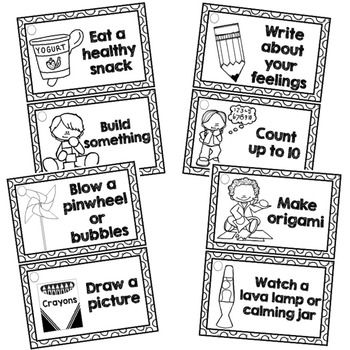 Set aside a quiet corner of the house and place things there to help you calm down (pillows, floor bags, exercise ball, etc.). When the child is upset or overwhelmed, explain to him that he needs to calm down, for example: “You are crying and throwing toys. You need to calm down." Guide the child to a place to rest and help him do something soothing, such as breathing deeply and slowly, counting to five, and so on. Use visual cues to show your child what steps to take to calm down. Praise and encourage your child for improvements in their mood. Over time, you can just tell your child to go calm down, and he can go to a place to rest on his own, practice relaxation exercises, and come back when he feels better. Calming strategies (their visual cues) should always be carried with you and used in any setting. It's not the place itself that matters, but the fact that you teach your child to regulate their own emotions. (See also: How to use the "unload zone" to help your child calm down.) nine0003
Set aside a quiet corner of the house and place things there to help you calm down (pillows, floor bags, exercise ball, etc.). When the child is upset or overwhelmed, explain to him that he needs to calm down, for example: “You are crying and throwing toys. You need to calm down." Guide the child to a place to rest and help him do something soothing, such as breathing deeply and slowly, counting to five, and so on. Use visual cues to show your child what steps to take to calm down. Praise and encourage your child for improvements in their mood. Over time, you can just tell your child to go calm down, and he can go to a place to rest on his own, practice relaxation exercises, and come back when he feels better. Calming strategies (their visual cues) should always be carried with you and used in any setting. It's not the place itself that matters, but the fact that you teach your child to regulate their own emotions. (See also: How to use the "unload zone" to help your child calm down.) nine0003
We hope that the information on our website will be useful or interesting for you. You can support people with autism in Russia and contribute to the work of the Foundation by clicking on the "Help" button.
You can support people with autism in Russia and contribute to the work of the Foundation by clicking on the "Help" button.
ABA Therapy and Behavior, Parenting Children with Autism
How to Calm a Crying Child - No Analogy
nine0074 13.09.2021
Content
- How to quickly reassure the crying child
- Change of scenery for quick stop hysteria
- Popular ways to rest and calm
- Change of activity - Effective method
- Active techniques for reassuring children children
- Mindfulness exercises for children
- Pressure as a calming tool for children
- Sensory techniques
- Tips for Stopping a Tantrum Quickly
Soothing a crying baby is not as difficult as a tantrum-weary parent might think. The main thing here is the calmness of an adult.
We offer calming strategies for children - these are tactics, activities, methods, worksheets and exercises aimed at reducing children's anxiety, anger, overexcitation, tension.
There are many activities that can help our children when they are upset, agitated or overexcited. Most of the exercises you will read below are also used as calming strategies for adults. nine0003
Sedding strategies usually fall into one or more of these categories:
- Relaxation,
- Understanding the problem and ways to solve it,
- Distraction of attention,
- Self -control,
- Emotions recognition,
- Perenopolion of emotions, emotions, Personation of Emotion
- coping strategy adapted to the specific situation.
Some of the proposed methods will immediately please you, others will seem crazy or ineffective. The meaning of a large list of exercises aimed at the same thing is to find your own method of solving the problem.
nine0003
How to quickly calm a crying baby
- Hug a soft toy . This is one of the stress-relaxing exercises. The premise of this relaxation method is that physical relaxation will result in a feeling of calmness. With gradual relaxation of the muscles, you begin to tighten, and then relax the muscle groups, following a certain order. You can also teach your kids to "breathe in/hug/breathe out/relax" by repeating this cycle a few times until they start to feel calmer. nine0081
- Massage . Medical studies have shown that the benefits of massage include pain relief, reduction of anxiety and depression, and a temporary reduction in blood pressure, heart rate, and anxiety.
- Grounding or 5-4-3-2-1 technique . This is a very simple and extremely effective baby calming exercise. It distracts children from the cause of the tantrum, helps them focus on the present moment and relax. So ask the child:
- Name 5 things you can SEE around you.
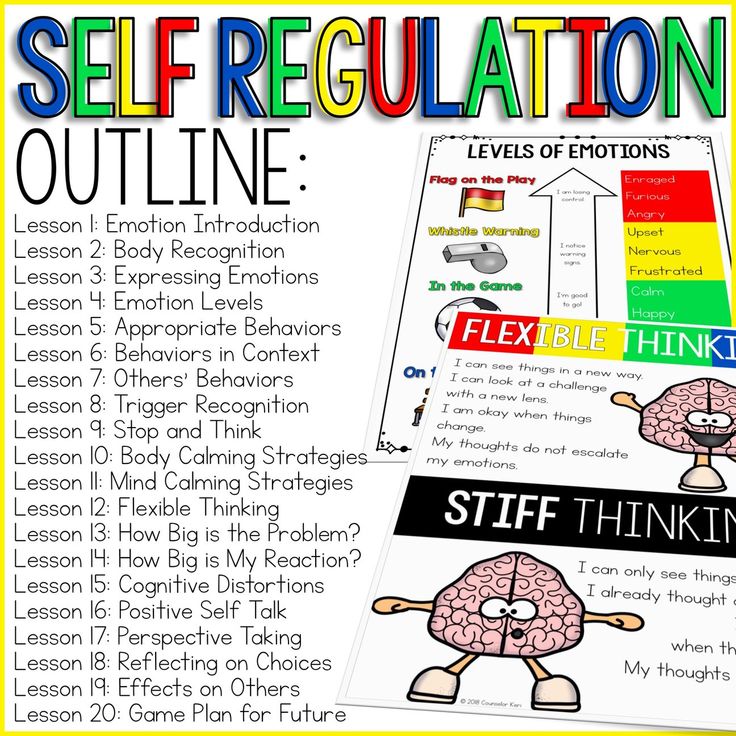
- Name 4 things you can TOUCH right now.
- Name 3 things you can HEAR here.
- Name 2 things you can Smell right now.
- Name 1 thing that you can TASTE here and now.
Here : children's games to relax0136
If a tantrum is happening right now, a quick change of scenery around the child can help as a distraction and away from the worry.
- Move to another room.
- Go outside.
- Send the child to walk with dad.
- Place the child in a corner. Strikingly, it is recommended by some psychologists as a short-term measure.
Popular ways to calm and calm down
- For older children and adults: write down your problems on a piece of paper and tear it up.
- For little ones: to help express their feelings. For example, you can download emotion chart and work with it.
- Teaching a child problem-solving skills.
You can use the Stop / Think / Do technique . Stop when emotions overwhelm. Think about alternatives to solve the problem. Implement the chosen strategy.
- Count until you feel relaxed.
- Keep a diary to record your feelings. The diary helps:
- to believe in yourself,
- to get rid of uncertainty,
- to express emotions,
- to realize mistakes,
- to see your progress.
Changing activities is an effective way
- Turn on the TV . Children's program. Of course, if the TV or something similar was not the cause of the child's tantrum, which must be extinguished. nine0081
- Board games . Here are reviews of board games and free board games for download.
- Computer games .
- Reading a book . Especially reading books with parents. What to read?
- Play with plasticine .
For example, you can make faces for monsters from plasticine.
- Drawing , coloring.
- Audio tales or songs.
- Loud singing to relieve tension. nine0081
- Game with toys.
- Warm bath .
- Snack . True, food as a way of distraction should not be abused. “Don’t cry, eat candy” fixes sweets in the brain as a way to overcome a stressful situation.
- Drink a glass of water .
Active Techniques to Calm Children
Use physical activity to burn off energy. This is both a strategy for switching attention, and just physical fatigue, which allows you to sleep better at night. nine0003
- Jump on the fitness ball .
- Jump without a ball, on the spot.
- Run .
- Ride the bike .
- Dance .
The idea for dancing is a dancing cube.
Breathing exercises for children
Breathing exercises help control excessive physiological arousal.
Here are some examples of exercises that help children learn deep breathing (most of the exercises are also used in speech therapy practice, that is, they are also useful for speech development):
- Pretend to smell the flower.
- Pretend to take away the candle so that it does not go out.
- Blow on the turntable.
- Blow on the napkin (piece of napkin) on the table to make it move.
- Blow soap bubbles (homemade recipes for soap bubbles).
- Blow out the candle.
- Deep breathing while an adult counts to 10.
- Alternating nostril breathing is an exercise in yoga breathing techniques. Place your thumb on the right nostril, index finger on the left nostril. Hold the right nostril with your thumb and inhale slowly through the left.
Exhale through the right nostril, closing the left. Hold your breath for a couple of seconds and inhale through the right nostril, leaving the left nostril closed. Continue alternating sides. nine0081
- Belly breathing (diaphragm breathing).
Mindfulness Exercises for Children
- Body Scan Meditation - This meditation technique involves moving our attention systematically and deliberately through our body, paying attention to different sensations in different parts of it.
- Developing tasks for the child's attention. Used to prevent children's tantrums when you see that the child is overexcited. nine0081
- memory,
- dotted lines,
- logical tasks: sudoku, mazes,
- find and show tasks.
Pressure as a calming tool for children
Whatever the throwback to this effect, most people find pressure calming. They even make special ones for this:
- Weighted blankets.

Learn more



